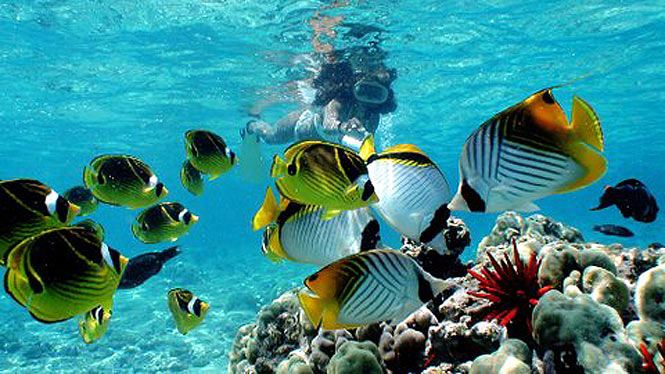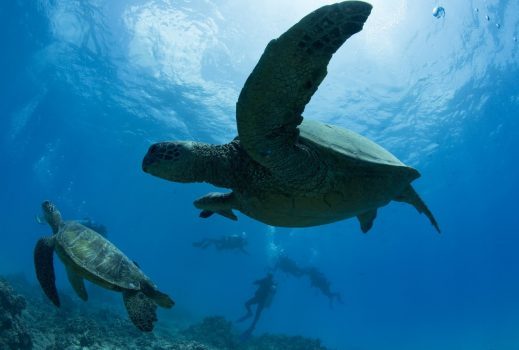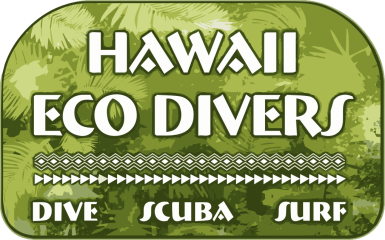BEST DIVE SITES IN WAIKIKI AND HONOLULU

If you’re staying in Waikiki you have amazing dive sites and snorkeling options just outside your hotel.

Hawaii Eco Divers leads double-tank boat dives out of Kewalo Basin Harbor (just across from the Ala Moana Shopping Center) every day. Join us for wreck dives at 8am & reef dives at 11am where we will explore all the best dive sites in Waikiki.
Guests at the Hilton Waikiki Beach, Ambassador Hotel Waikiki, Ala Moana Hotel, Outrigger Waikiki Beach Resort, Waikiki Beach Marriott Resort, Sheraton Waikiki, Aston Waikiki, Hyatt Regency Waikiki, Royal Hawaiian Waikiki, Moana Surfrider and other major Waikiki hotels will find our boat is within easy walking/driving distance.
Sea Tiger Shipwreck:
The most famous dive site is the Sea Tiger, which is the deepest recreational wreck dive site in Honolulu. At 123 feet deep, it is an ideal dive for advanced divers familiar with deep diving. The Sea Tiger was a Chinese smuggling vessel that intentionally sunken in 1999 to create an artificial reef for divers to enjoy. At 189 feet long, this sunken vessel has become a sunken treasure. Among the many corals you’ll find growing throughout the ship you’ll also find giant Green Sea Turtles taking naps among the holds and White Tip and Black Tip Reef Sharks frequently snoozing in its protective shadow along the sandy bottom. Other common sites here are large Moray Eels and Eagle Rays. Extremely lucky divers may catch a glimpse of a passing Tiger Shark or hear Humpback Whales singing to each other as they arrive for mating season.
This shipwreck is also still in excellent condition and offers several penetration points of varying difficulty. Given the depth of the wreck, bottom time is usually around 20 minutes, so it’s crucial to have a specific dive plan in mind before jumping in. The best plan of action is to go with experienced guides.
YO-257 Shipwreck:
115 feet deep and 175 feet long, this WWII Navy Warship holds amazing surprises. Due to its depth and the strength of the currents this dive is ideal for advanced divers. While the currents can at times prove challenging they also bring many intriguing visitors. Divers at this wreck are may spot Green Sea Turtles, White Tip, Black Tip and Galapagos Reef Sharks, Manta Rays, Eagle Rays, Nudibranchs, Dolphins, Whales and even the occasional submarine! Yes, a tourism agency runs its commercial submarine past this wreck daily which can make for some pretty epic dive pictures but be sure to stay clear its strong propulsion system! While not in as good repair at the Sea Tiger, the YO still offers several penetration options and at less depth, you’re able to achieve longer bottom time: anywhere from 20-35 minutes, depending on which portion of the wreck you spend the most time at. Our Dive Masters will best know how to ensure you have a safe descent, maximize your sightings during your dive, and get you back aboard safely.
San Pedro Shipwreck:
Next to the YO is the San Pedro. This site is an ideal wreck dive for beginner divers as it sits in only 60 feet of water but still boasts most of the marine life you’ll see at the YO. There are a few hazards though so, despite being a more shallow dive, a proper descent and ascent plan need to be in place: the strong currents at the YO are also active at the San Pedro, so only strong swimmers should attempt this dive; the wreck is quite deteriorated (which is part of why it’s so beautiful) so the metal structure is quite sharp and should never be touched. Gloves and good buoyancy skills are highly recommended.
Turtle Canyon:
If you like sea turtles, head straight to Turtle Canyon. While you’re likely to see honu in the warm waters all around Oahu, the cleaning station at Turtle Canyon is one of the most impressive places to see them in large numbers.
This shallow reef dive, between 20-30 feet, is an easy float that will thoroughly entertain both novice and advanced divers. The lava rock and coral ridges here form a series of canyons where sea turtles like to nap and be cleaned by Black and Yellow Tang fish. You may see up to 10 sea turtles peacefully floating in the clear water, barely moving a muscle while they get their shells waxed. In fact, they’re so relaxed you’ll likely have to dodge them as they float by and collide with anything in their way!

Horseshoe Reef:
Named for its horseshoe shape, this reef is a great jumping off point for multi-reef exploration. Surrounded on all sides by additional reefs, you’re likely to find White Tip Reef Sharks and Sea Turtles sleeping in the nooks and crannies of the coral shelf systems throughout the area. And if you’ve got a keen eye, you’re also likely to see an Octopus camouflaged and waiting in its hideout.
Kewalo Pipe:
Possibly the easiest dive site in Honolulu, the Kewalo Pipe is an out of use storm drainage pipe that has turned into a very easy to navigate artificial reef with a maximum depth of about 65 feet. The straight out and back dive will take you past corals, crabs, moray eels and potentially, if you’re lucky, sting rays!
If you’re feeling adventurous, you can also head to either side of the pipe to explore additional reef systems. If you head to about 50 ft depth along the pipe you can turn left or right for additional exploring.
Nautilus Reef:
Shark Reef, Nautilus is another site within the Kewalo Reef that is great for both beginner scuba divers and advanced alike. It boasts both easy to navigate shallow sections while also offering jumping off points for further exploration away from the crowds. Average depth is about 25 feet however it does reach as much as 100 feet in depth the further away from shore you explore. On guided tours you will usually stay within the 30-40 foot range, where you will have about 40 minutes to explore the lava rock and coral formations that house an abundance of tropical fish, octopuses, sting rays, moray eels and sea turtles.
Nautilus Reef could also be called Shark Reef, as this is the place you’re most likely to encounter sharks on the reef! You will frequently find white tip and black tip reef sharks napping here, as well as the occasional gray reef shark and tiger shark passing through!

Written by Shawnee Canjura
